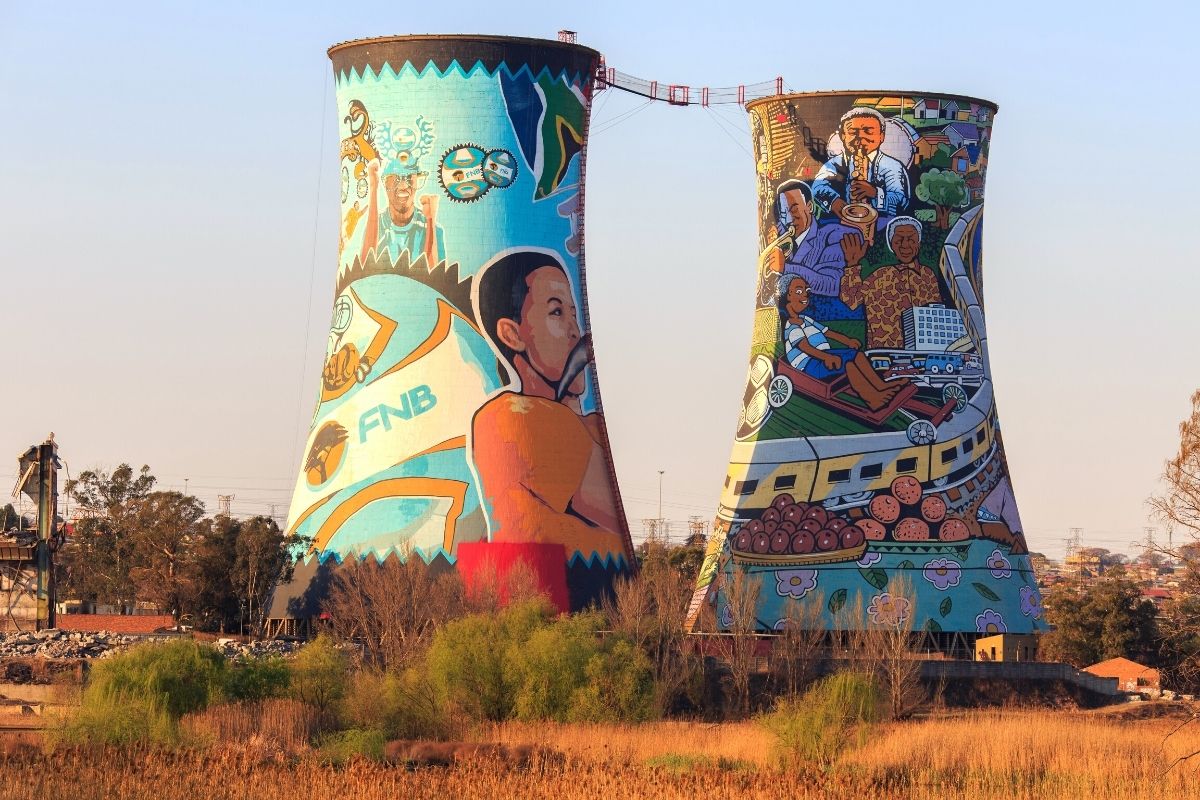The 2-Minute Rule for Johannesburg North Attractions
The 2-Minute Rule for Johannesburg North Attractions
Blog Article
The smart Trick of Johannesburg North Attractions That Nobody is Talking About
Table of ContentsThe smart Trick of Johannesburg North Attractions That Nobody is Talking AboutJohannesburg North Attractions - The FactsJohannesburg North Attractions Can Be Fun For AnyoneExcitement About Johannesburg North AttractionsJohannesburg North Attractions - An OverviewGet This Report on Johannesburg North AttractionsThe 7-Minute Rule for Johannesburg North Attractions
You must keep safety and security in mind and vacationers must continue to be sharp at all times when in strange environments. Talk to the locals when you remain in town to discover the location you are remaining in. Johannesburg North attractions. When on the road (this doesn't put on buying malls and various other safe atmospheres) finest basic suggestions is to attempt your ideal to look like a regional and to prevent displaying any form of wide range
The Best Strategy To Use For Johannesburg North Attractions
Professor Revil Mason O. J. (Thomson, 1946) explored the Witwatersrand's pre-colonial background. His archaeological work blew up the 'em pty land' misconception, according to which the region was without human habitation before the arrival of European inhabitants. In his magazines Prehistory of the Transvaal: A Document of Human Activity (1962) and Origins of Black People of Johannesburg and the Southern Western Central Transvaal AD 3501880 (1986 ), Professor Mason demonstrated the level of social and financial development in the location prior to Europeans established foot below.

The Definitive Guide to Johannesburg North Attractions
In 1878, David Wardrop located gold in quartz blood vessels at Zwartkop, north of Krugersdorp. In 1881, Stephanus Minnaar came across gold on the ranch Kromdraai, near the Cradle of Mankind.
In March 1886, an outcropping (quickly to be called the Main Coral reef) was found, quite luckily, on Gerhardus Oosthuizen's ranch Langlaagte. Some claim that the Lancastrian coal miner George Walker found this reef. An additional itinerant English prospector, George Harrison (who had previously worked in Australian mines) acquired a prospecting permit in regard of Langlaagte in Might 1886.
He chose to relocate on in a pursuit for greener pastures, and disposed of his Langlaagte case for the princely amount of 10. Alas: under lay the richest goldfield ever found. The exploration of this abundant auriferous reef provoked a gold thrill that indicated completion of agrarian tranquillity in the southern Transvaal.
It would, within 6 years, become the largest town in southerly Africa. Within a decade, it would make the Z. A. R. up until after that an anarchical and bankrupt little state the richest country in Africa. By the millenium, the Z. A. R. was to exceed Russia, Australia and the United States of America to become the world's leading gold manufacturer, producing more than a quarter of the globe's gold.
How Johannesburg North Attractions can Save You Time, Stress, and Money.
It was recognized as Ferreira's Camp, named after Colonel Ignatius Ferreira. He was a Boer adventurer upon whom the British authorities had actually presented the status of Buddy of the Many Differentiated Order of St Michael and St George (entitling him to the post-nominal letters C. M. G.) in gratitude for his function in the war that had deposed the Pedi king Sekhukhune in 1879.
Soon the camp was including camping tents and wagons as newcomers showed up daily from everywhere. By September 1886, some 400 people lived in Ferreira's Camp, which soon boasted built iron and hardwood structures. Two other camps were developed: Meyer's Camp on the farm Doornfontein, and Paarl Camp. The latter was nicknamed Afrikander Camp; many individuals from the Cape Colony cleared up there.

Some Known Factual Statements About Johannesburg North Attractions
This name gained currency by word of mouth, such that the check out here State Assistant verified the name to the Mining Commissioner on 9 October 1886. Stands in the village were auctioned on 8 December 1886. While some stands were cost 10, others were knocked down for as low as sixpence.
2 years later, these erven were to transform hands for as much as 750 each. The tented camps dwindled as a dorp of corrugated iron buildings created and broadened north of the mines located along the Key Reef Road. Areas such as Jeppe's Community (where working-class immigrants erected their homes) and Doornfontein (where the upscale new 'Randlords' started to create their opulent residences) were quickly included in the ever-expanding map of the community.
Johannesburg North Attractions Fundamentals Explained
In addition to the road names, there were no indicators of Johannesburg being situated in a Dutch-speaking country. Lots of years later, C. W. Kearns O. J. (among the very first boys enrolled at St John's University in 1898) would recall: 'A strange fact regarding Johannesburg was that, although it was in the [Boer Republic], almost every person talked English and even the Federal government slaves resolved one in English, unless they were first addressed in the Taal (or Reduced Dutch)'.
Britain had a passion in guaranteeing optimum conditions for gold production on the Witwatersrand, and that the gold visit here was exported to London instead than Berlin a critical made all the more clamant by the Z. A. R.'s enhancing toenadering with Germany. Mine proprietors were on an accident course with Head of state Kruger, whose plan of monopolistic concessions (typically given to his cronies) prevented mining companies from obtaining products of products (especially dynamite) and work by themselves, more affordable terms
Getting The Johannesburg North Attractions To Work
In 1890, the Volksraad had actually limited the franchise business to white guys who had actually stayed in the Z. A. R. for fourteen years or longer, therefore disqualifying a lot of the immigrants (who took place to be the major contributors to the fiscus). Nevertheless, frustration for the vote was a plain pretense for advertising a various program; most uitlanders regarded themselves as short-term visitors and had no purpose of staying in the Z.
Report this page